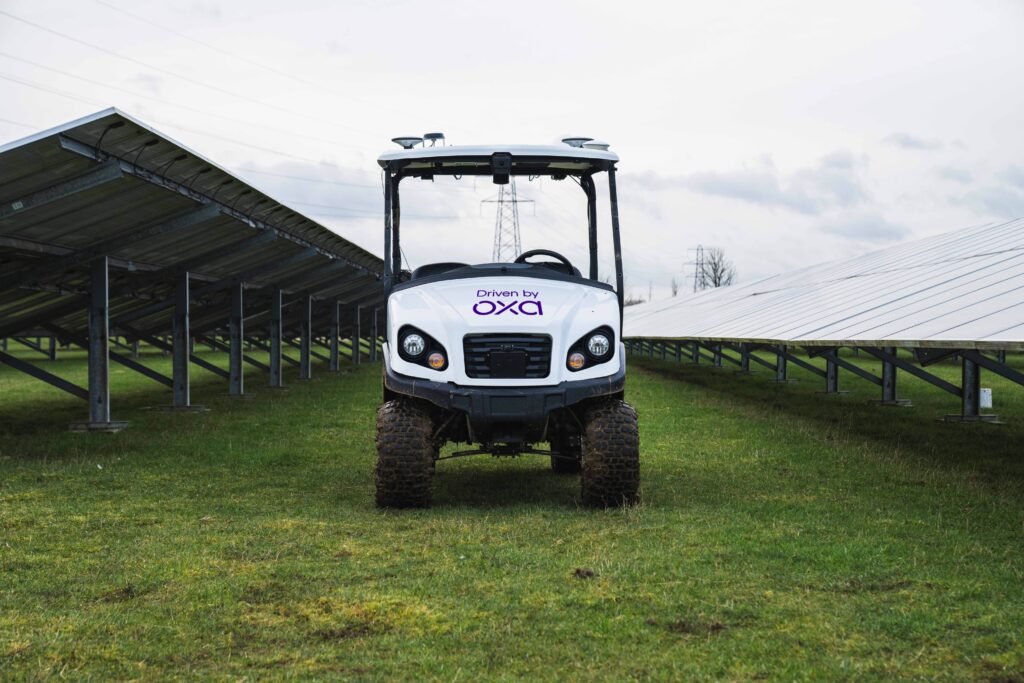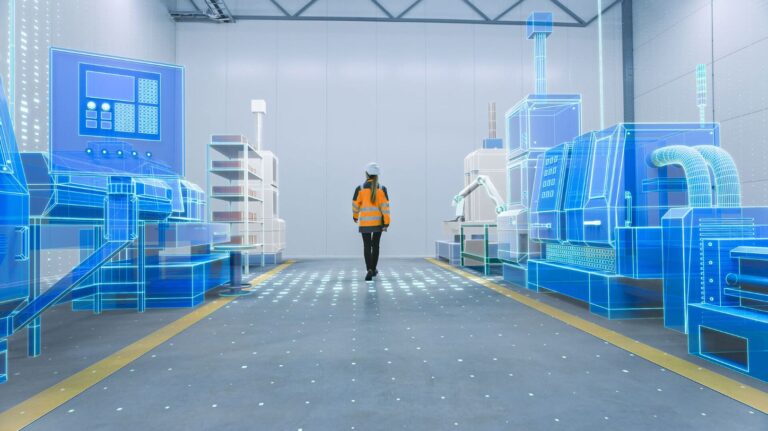City Transport & Traffic Innovation Magazine explores how the development of autonomous vehicles has paved the way for the arrival of a new smart, safe and cost-efficient means of delivery.
When seminal science-fiction author Issac Asimov penned the final line of his short story ‘Sally’, a tale exploring the lasting implications of automobile sentience, in 1953, even he could little imagine how far autonomous vehicles would come over the next 70 years. In fact, as of 2024, Precedence Research values the industry’s market size at around US$207 billion (c. £153bn) with a Compound Annual Growth Rate (CAGR) of 38.5% – this compared to the internal combustion engine vehicles industry’s 1-2% CAGR. Despite this rapid growth, the industry has faced regulatory hurdles that prevent the connected autonomous vehicle (CAV) ubiquity seen in Asimov’s novella.
Lighter, safer, able to run on pre-programmed routes and free of some of the regulatory tape stuck to CAVs, delivery companies are slowly beginning to explore the application of autonomy in delivery. Bridging the gap between science-fiction and reality is no easy task, however, and delivery CAVs come replete with their own set of challenges. As the industry continues to develop, how are the companies at the forefront shaping the next evolution of (the delivery) man?
Living machines
Powered by positronic brains, Asimov’s machines were susceptible to the same maladies as humans: fatigue, error and inconsistency. Modern robotics and collaborative robots (cobots) negate these issues by focussing on fixed systems designed to conduct rudimentary, repetitive tasks. CAVs, however, operate in dynamic, shifting environments with each interaction – be it traffic systems, humans or other vehicles – compounded by programming limitations stemming from insufficient data or modelling. Removing the human component of CAVS, either in operation or as an obstacle, therefore greatly streamlines operations.
“Autonomous delivery vehicles require a careful balance of digital systems with real-world urban infrastructure,” says Giacomo Margiotta-Mills, industry director of transportation and mobility for Northern Europe at Dassault Systèmes. “While features like navigation may operate independently, real progress comes from embedding these systems into an urban mobility framework, offering efficient and low-emission solutions for last-mile logistics.”
FAST FACT: UK autonomous vehicle industry is projected to have a £42bn economic impact. Source: Gov.UK
The first autonomous delivery trials involved delivery robots capable of undertaking short, pre-programmed journeys for last-mile delivery. A more recent example of this comes from Domino’s Pizza, which debuted its ‘Domidog’ in July 2025 – a Boston dynamics robot dog that delivers pizzas across Brighton’s beaches. While this is a novel idea, unless an army of Domidogs stormed the seafront, demand would always outstrip supply. For larger scale deliveries, as with freight or urban logistics, traditional vans or lorries outfitted with Level 3 (conditional driving automation) to Level 6 (full driving automation) functions have taken precedence.
Oxa is one company with ambitious plans in the autonomous vehicle space. Its CEO, Gavin Jackson, explains: “Oxa has a bold vision: to build software that enables any vehicle to be self-driving, anywhere, at any time or universal autonomy.”
“We’re focused on the most commercially viable autonomous vehicle sectors and where the world needs autonomy most, today: industrial logistics, asset monitoring and shared passenger transportation.”
These markets can be grouped into the industrial mobility automation (IMA) sector which includes airport ground transportation, port and retail yard trailer/container shunting, asset monitoring, factory line parts logistics, hub-and-spoke goods delivery and fixed-route shared passenger transportation.
“These tasks, performed by 400 million work vehicles globally, are completed on uniform routes, and are place-specific,” Jackson continues. “IMA unlocks the potential for automating the billions of processes that involve driving, [which would result] in higher productivity, cost savings, improved safety, and a more sustainable operational model.”
A recent DHL and Oxa project at Heathrow Airport demonstrated the exponential possibilities of IMA. Over 14 days, Oxa completed more than 1,300km of baggage handling journeys via autonomous delivery vehicles in live airport traffic. With initial operational targets met, the experiment now has a scalable plan should DHL utilise Oxa vehicles to handle the 60,000 passenger bags moved each month between Heathrow terminals. However, for companies that need vehicles to navigate densely populated urban areas – in sectors such as food and beverage, parcel delivery or white goods – advanced navigation systems are needed to ensure efficiency and safety. Global Navigation Satellite Systems (GNSS) relay information to satellite constellations to ascertain vehicle location which, in the case of CAVs, can be used to monitor routing and ensure safety.
“In dense urban areas, GNSS signal interference can mean delivery drivers waste time searching for the correct building entrance, or ride-hailing services struggle to locate passengers,” says Focal Point Positioning CEO Scott Pomerantz. “When you consider that an Amazon driver might deliver around 250 packages in a single day, the impact of reliable GNSS is undeniable.”

Equally important is light detection and ranging (LiDAR) technology which enables CAVs to utilise GNSS information, mapping out localised environments to create detailed map of its surroundings. For delivery vehicles, live-mapping is particularly pertinent as relying on pre-installed data could prove unreliable when each destination differs and, in the case of households, subdivided into multiple properties. Underpinning these technologies is the application of virtual twin modelling; a high-fidelity digital representation of physical objects that behaves in sync with its real-world counterparts. This technology is essential to develop scalable systems capable of operating across a variety of dynamic environments. Optimising such software in-house reduces operational costs, as well as downtime for each individual vehicle.
“Virtual twins also support the integration of autonomous vehicles into smart city infrastructure, offering seamless coordination with traffic signals and road networks,” explains Margiotta-Mills. “Crucially, real-time feedback loops with live vehicle data enable continuous learnings by comparing actual versus expected behaviour, in turn enabling continuous improvement through wireless updates.”
Additionally, advancements in artificial intelligence (AI), and in other related fields, have been readily incorporated into CAV technology. Previously laborious, computationally intensive tasks can now be performed rapidly via AI modelling, with each iteration improving efficiency as more data is collected.
“We use GenAI to rapidly train, test and improve models that become expert ‘agents’ for automating the task,” Jackson continues. “As a vehicle continuously learns from its diverse environments, it gains expertise from specific routes on the path towards global adaptability. Each hyperlocal model contributes insights back to the universal model, enriching the whole system and allowing it to become increasingly capable over time.”
“Similarly, ASDA and Wayve recently deployed autonomous delivery vans in London, using AI models trained on real-time urban data,” Margiotta-Mills adds. “They were able to navigate busy streets while feeding learnings back into the system.”
Legal circuits
By virtue of their fixed pathing (IMA) or singular pathing (urban last-mile logistics), delivery CAVs avoid the regulatory burdens placed upon CAVs used for transportation. In the UK, the latter is bound by the Automated Vehicles Act 2024 with the Automated Vehicles Act Implementation Programme facilitating its application. These piecescof legislation will bring the trials of Level 4 robotaxis and buses forward to 2026. As delivery companies prioritise larger vehicles with partial autonomy, this legislation is defining their business practices. For example, e-transit vans, which ferry up to 10 passengers – or cargo, depending on current needs – can only operate up to 35mph in mixed traffic as they share the roads with human operators. In this case, manual controls are preserved to ensure flexibility between autonomous- and- non-autonomous modes.
“We developed our S-GNSS technology to help enhance the accuracy and reliability of GPS systems in vehicles, particularly in challenging urban environments,” Pomerantz adds. “It improves the performance of Advanced Driver Assistance Systems by providing more precise location data, making autonomous driving and other safety features more reliable.”
It is important to note that this does not lower the safety standards for autonomous vehicles; rather, specific operator licenses, in-use monitoring, incident reporting (by 2027) and upgraded technical standards are expected to enhance safety. Skirting the line between true autonomy and manual driving will enable deliveries to be conducted safely and without the need for smothering legislation. But how can these systems be improved to the point where, eventually, tasks can be conducted with minimal human input?
Concluding his novel, Asimov ominously asserts: “Cars get ill-used, you know.” The complexity of delivery, be it in last-mile, urban logistics or long-haul freight, necessitates both operators and end-users keep their eyes on the wheel as it pertains to proper autonomous usage. If done correctly, deliveries of all types could create a self-monitoring, functioning ecosystem of autonomy that operates at a fraction of the cost traditional mechanisms. These kinds of developments could guide the future of freight.
“For autonomous vehicles to scale in logistics, we need navigation systems that are robust to spoofing, resistant to interference and resilient [when used] in GPS-challenged environments,” Pomerantz concludes. “It’s not just about knowing roughly where a vehicle is, it’s about being certain, and being able to prove that certainty to regulators, insurers, and fleet managers.
This article was originally published in the September 2025 issue of CiTTi Magazine.
Achievements and innovations in alternative fuels will be recognised and celebrated at the fourth annual CiTTi Awards on 25 November 2025 at De Vere Grand Connaught Rooms in London. Visit www.cittiawards.co.uk to learn more about this unmissable event for the UK’s transportation sector!





